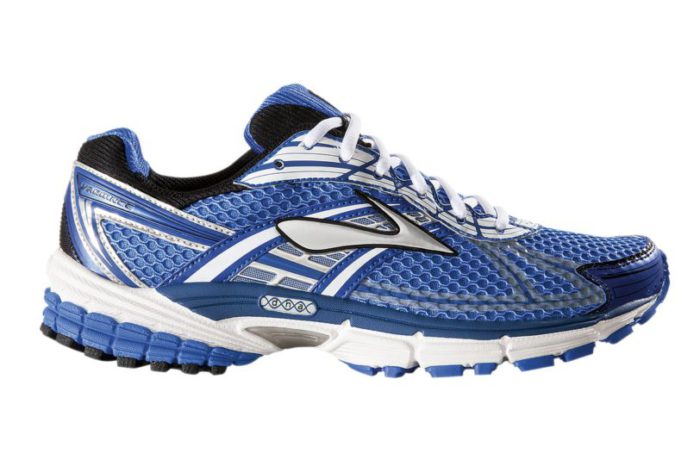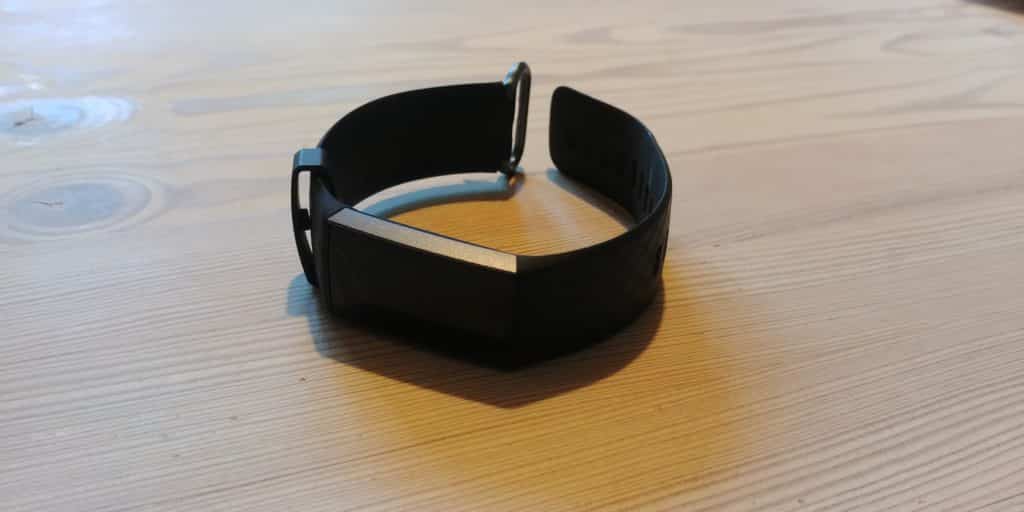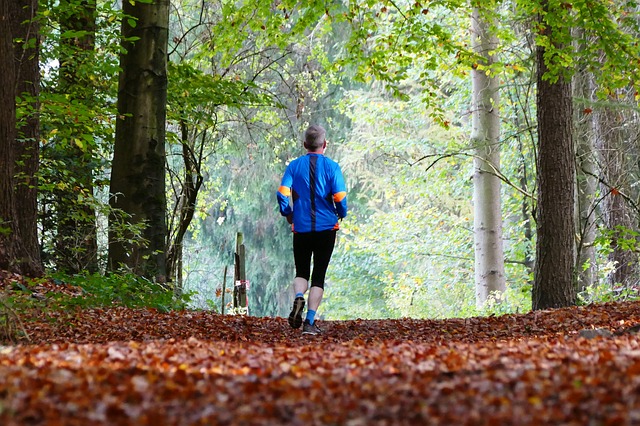Today we will look at a simple running program for seniors. If you are interested in running but aren’t quite sure if it’s healthy or even possible for seniors, read on, I’ve got the answers for you!
Running is one of the most fundamental and natural forms of exercise for humans right after walking. We are essentially built for it. Our legs, muscles and cardiovascular system are designed for long-lasting endurance exercises like walking and running.
Of course, running can be done at several intensity levels and this affects how long you can perform the activity as well as the metabolic effects. Generally speaking short sprinting or HIIT (high-intensity interval training) are performed at an anaerobic level while longer distances rely on the aerobic energy production system.
Aerobic means “requiring air” and thus anaerobic means not requiring air. Of course, both forms of exercise will make you run out of breath, but the difference is that anaerobic exercise is high intensity for a short period of time and relies mostly on energy stored within your muscle cells.
You can perform anaerobic work holding your breath momentarily, but you will have to breathe eventually after you stop the exercise. Aerobic exercise requires you to constantly breathe to allow oxygen to be transported to the muscles through the bloodstream.
This distinction is important because when I talk about running for seniors, I am referring to endurance-based long-distance running, not sprinting.
Older people can perform aerobic running or jogging if their weight, strength, and fitness allow them to do it at an aerobic level. However, there are certain considerations you have to take into account and running is definitely something every senior can’t or should not perform.
But If you are one of those that can perform running safely, it’s definitely a beneficial activity for your health. Let’s start by looking at the benefits of running for seniors!
Benefits of running for seniors
The benefits of running and cardiovascular exercise are many. First of all, it keeps your heart and cardiovascular system healthy by improving circulation and metabolism.
The extended period of increased heart rate that running causes will force your heart to work hard and over time improve its strength, endurance and the amount of blood it can pump.
Your circulatory system loves cardiovascular exercise. The increased heart rate is like massaging to the arteries and veins as it causes them to expand and contract because of the changing blood pressure. This makes the arteries more elastic and less prone to hardening (atherosclerosis), which can cause heart disease.
https://youtu.be/YRY189A2Mw8
You lungs will become better at transferring oxygen from the air that your breathe as the demand is increased. This makes breathing easier and more efficient. If you have ever been so out of shape that you have to catch your breath after a flight of stairs, aerobic exercise is the best cure for this, assuming the shortness of breath is not caused by a medical condition.
The impact of running on your bones and joints will increase your bone density preventing and healing osteoporosis. This is something especially older women are prone to suffer from.
Running requires a certain amount of base strength and it will also help to maintain that strength even if you don’t perform strength training. That said strength training is much more efficient in improving strength and muscle mass but running is better than nothing.
Cardiovascular exercise can also help you improve your blood sugar and cholesterol levels as it can reduce inflammation and increase insulin sensitivity.
Is Running Safe For Seniors
So can you start running at 60 or even after 70 years old and is it safe? The answer is yes, you can likely start (or keep) running as a senior but there are certain precautions you have to take into account and there are individual situations that might prevent you from running.
Generally speaking, you should be normal weight and overall healthy and active if you want to consider running as a senior. This is because even though running is a great way to improve your fitness, it’s a relatively strenuous activity. If you are overweight and/or haven’t done strenuous exercise in recent years, there are inherent risks associated with running.
These include joint pain, back pain, heart problems, connective tissue inflammation and even falling down and hurting yourself.
Running puts quite a bit of force on your ankle, knee, and hip joints as well as your lower back on each step. This is especially true if you are overweight. That’s why it’s never a good idea to start running while significantly overweight, as there are better and safer ways to exercise for weight loss.
Even if you are in relatively good shape and have a healthy body weight, it’s still important to get a health check with your doctor to clear out any heart issues or other medical contraindications for running.
If you get medical clearance to start running, it’s wise to start by improving your strength with strength training and your endurance with walking or cycling. You should be able to walk several miles effortlessly at a fast pace before considering running. This allows your heart and cardiovascular system to get strong enough to handle running.
Strength training is important for running because it makes every step lighter, helps you activate the correct muscles while running, makes your joints and ligaments tougher and helps to keep a good posture while running, which is very important for the correct technique.
Considerations in running for seniors
Before you start a running program, there are some considerations you should take to prepare your body for running and to help avoid injuries.
Take it very slowly
Depending on your current fitness level, previous athletic background, body weight, age, and several other variables, running can be relatively easy or very straining on your body. This is why it’s very important to start very lightly and see how you feel.
Tracking your progress and following a program is very important to avoid overtraining and injuries. It’s easy to overdo running in the beginning if you don’t give your body enough time to recover and adapt. Just like in strength training, the benefits and improvement happen during rest, not during the activity.
If you push yourself too hard several times, your risk injuries and overtraining can prevent you from running for a long time or in the worst-case scenario cause permanent health issues.
So take it slowly, build a good base and do some strength training before you start to push your limits with running.
Get strong before starting to run
Benefits of strength training for seniors are incredibly diverse and you should aim to improve your overall strength before starting to run.
Being strong makes running easier because each step is lighter relative to your maximal strength. Having a strong core and upper body also helps with the posture while running which is very important for avoiding back and joint pain.
Strength training also improves bone density and makes your tendons, ligaments, and other connective tissues stronger. This helps you avoid injuries while running.
One of the biggest benefits of strength training for running is that it can help you learn the correct way to use your hips and legs for force production, something that many people have forgotten due to sitting too much.
Invest in a pair of high-quality shoes
The most important piece of equipment for running is shoes. A pair of high-quality running shoes with good cushioning is important to reduce the impact on your joints.

Good running shoes will also make running much more comfortable because they are generally lightweight and made out of breathable material.
Check out my resource for best running shoes for seniors to learn more about running shoes.
Invest in a running program
A good running program that’s designed by a professional will save you from a lot of trouble and potential overuse injuries. A good program helps you improve your running skills in an optimal way while taking recovery into consideration.
Typically people either train way too hard or way too little. A good program will tell you exactly how much you need to train on the workout of the day and over time.
My recommendation for beginners running program is the howtostartrunning.com beginner program (affiliate link, I earn a small commission if you buy).
Invest in a fitness tracker
Like I said a second ago it’s typical for people to train either too hard or too little. The program tells you how much but with running distance is not the only thing that matters.
Speed and effort is even more important than distance and it’s very hard for us humans to gauge our speed and effort by feel. It takes literally years of experience in running to be able to estimate your running speed even vaguely accurately.

This is where a fitness tracker comes in. They are simple devices that count your steps, heart rate, speed and can connect to your smartphones GPS for added accuracy. They simply help you gauge your speed and save your progress for future reference. My recommendation for seniors is the Fitbit Charge 3.
Take recovery very seriously.
The main difference between young people and older adults is that young people recover much faster. Faster recovery allows more training and thus faster progress. This simply means older people will progress slower.
Older people should focus on making progress very slowly and allow ample recovery time. You can use a regular running program as a senior but you should either reduce the running distances or increase the time between runs to improve recovery.
This allows your tissues to recover for the next run and reduce fatigue. This is especially important for older runners because if you get an overuse injury like tendinitis on your knee, they are very slow to recover. It might take several months of avoiding running to recover from such an injury. Nothing sets you back more than injury, so it’s better to focus on prevention.
Never run on hard surfaces.
The last but not the least consideration is to never run on hard surfaces like concrete or asphalt. This is because running causes an impact on your joints on every step like we talked about a moment ago.
Just like a pair of high quality running shoes, the surface you run on affect how great this impact is. So always choose grass, cinder, synthetic track or wood trail over hard surfaces to minimize the impact on your joints.
Treadmills are also a good option for seniors as they help you track your progress and allow you to run in the comfort of your own home. Treadmills are generally designed with enough elasticity to reduce impact while running.
Simple running program for seniors
My recommendation for a simple, yet effective running program is the Running For Beginners by Jaco Holmes (affiliate link, I earn a small commission if you buy). Jaco is a certified personal trainer with extensive experience in training people of all ages and backgrounds in running.
His program is based on the fact that many beginners start running with way too much enthusiasm and end overtraining or injuring themselves. So his program is based on relatively light progression with an emphasis on recovery, which is ideal for seniors.
The program is beneficial even if you have some former experience in running as it’s simply laid out and has proven to provide results. Definitely, a good investment in your running career that won’t leave you disappointed!
Conclusion
I hope you found my recommended running program for seniors useful and will try it yourself. If you have any questions about running, please leave them in the comments below and I’ll get back to you soon.
Running is definitely a beneficial activity for those seniors that can do it. It’s also relatively safe if you are otherwise healthy and not overweight.
It’s still wise to take certain precautions to minimize the risk of injury and improve recovery, which is reduced the older you get. When you take these things into consideration, running can be a challenging and fun activity that will improve your fitness even as a senior. Older people who are able to run live longer and healthier lives on average, so it’s definitely beneficial for seniors!
If you feel like running is not for you, don’t worry! You can still get all the health benefits and more by combining strength training with an active lifestyle and low-impact exercises like walking, cycling or kayaking (check out my review for the best kayak for seniors). You can download my free strength training program for seniors on the right.
See you next time!


I’m 73 and have run all my adult life. Continue to enter 5K’s. It’s getting harder and harder. Any suggestions for a training program so I can keep going? Oh yes, my times are getting slower. Thanks
Great to hear you have kept running your whole life Wally! I think one important factor you might want to look into is strength training. Long-distance running and aging can lead to loss of muscle mass and strength, which will eventually lead to degradation in running performance. Unfortunately this is inevitable to an extent. I know it can be hard to accept but at your age, it’s reasonable to expect reduced performance compared to your youth. Also make sure you are recovering enough between runs.
I ran my whole life until age 50, then stopped. No reason just got tired. Now I’m 78 and want to run again but have lost muscle memory. How do I proceed? I’m 5′ 7″ & 130# and started walking 5 years ago.
Hi David! At your age, the best approach would be to start by discussing running with your doctor. Running can be very strenuous so it’s important to make sure you are in good health. When you have a medical clearance, you need to start building strength and stamina very slowly. Brisk walking combined with strength training focusing on the legs and the core is a good start. Once your strength and conditioning permit you can start to include light jogging and build up from there. It would also be a good thing to consult a running instructor who has experience with senior runners to make sure your form is good. This should probably happen over months, not weeks or days. The important thing is to start light, build up gradually and listen to your body. It is also good to consider if running is worth pursuing at your age or if it could be replaced with other types of exercise. I really recommend you look into combining walking and strength training. Hope this helps!